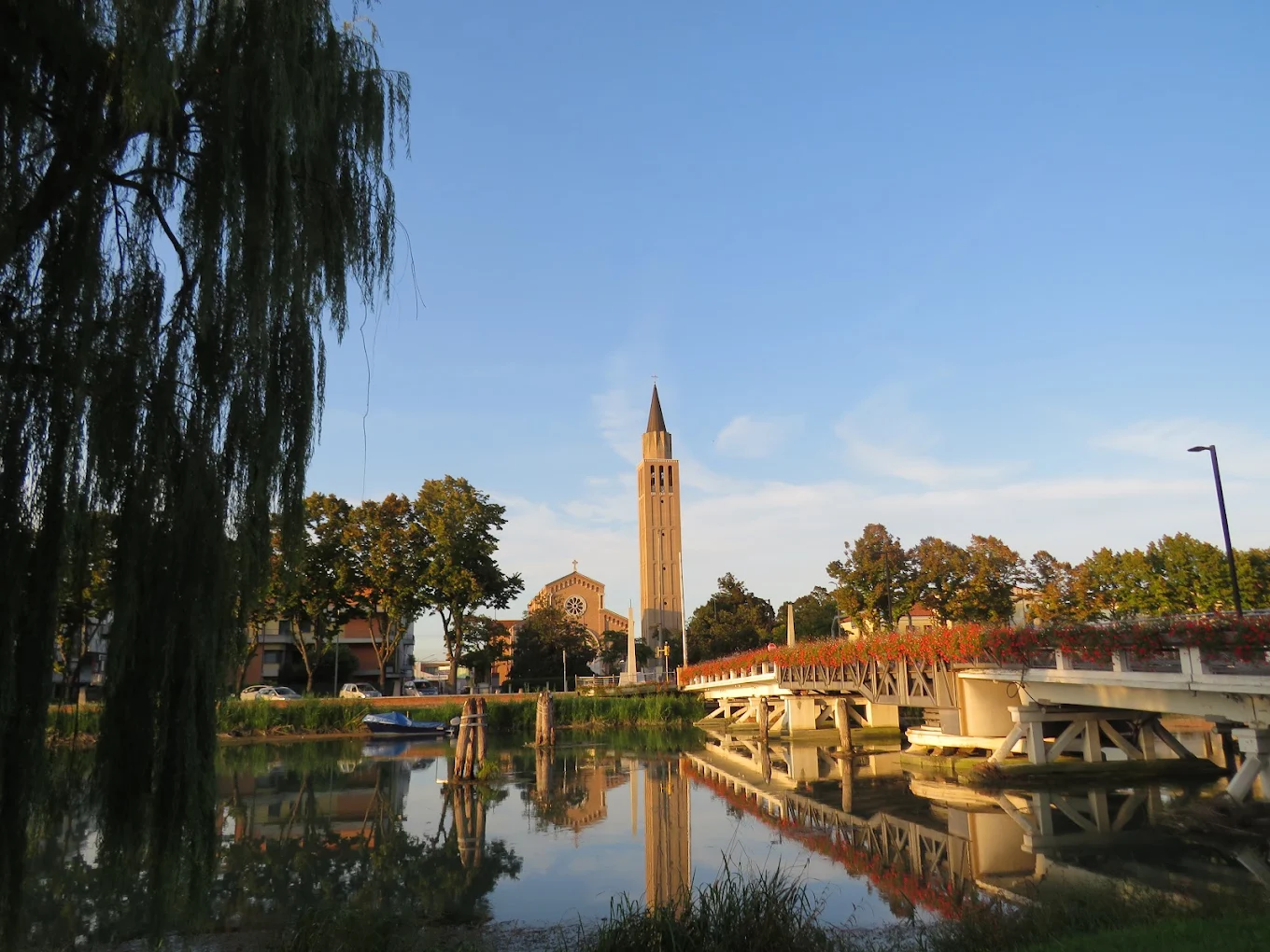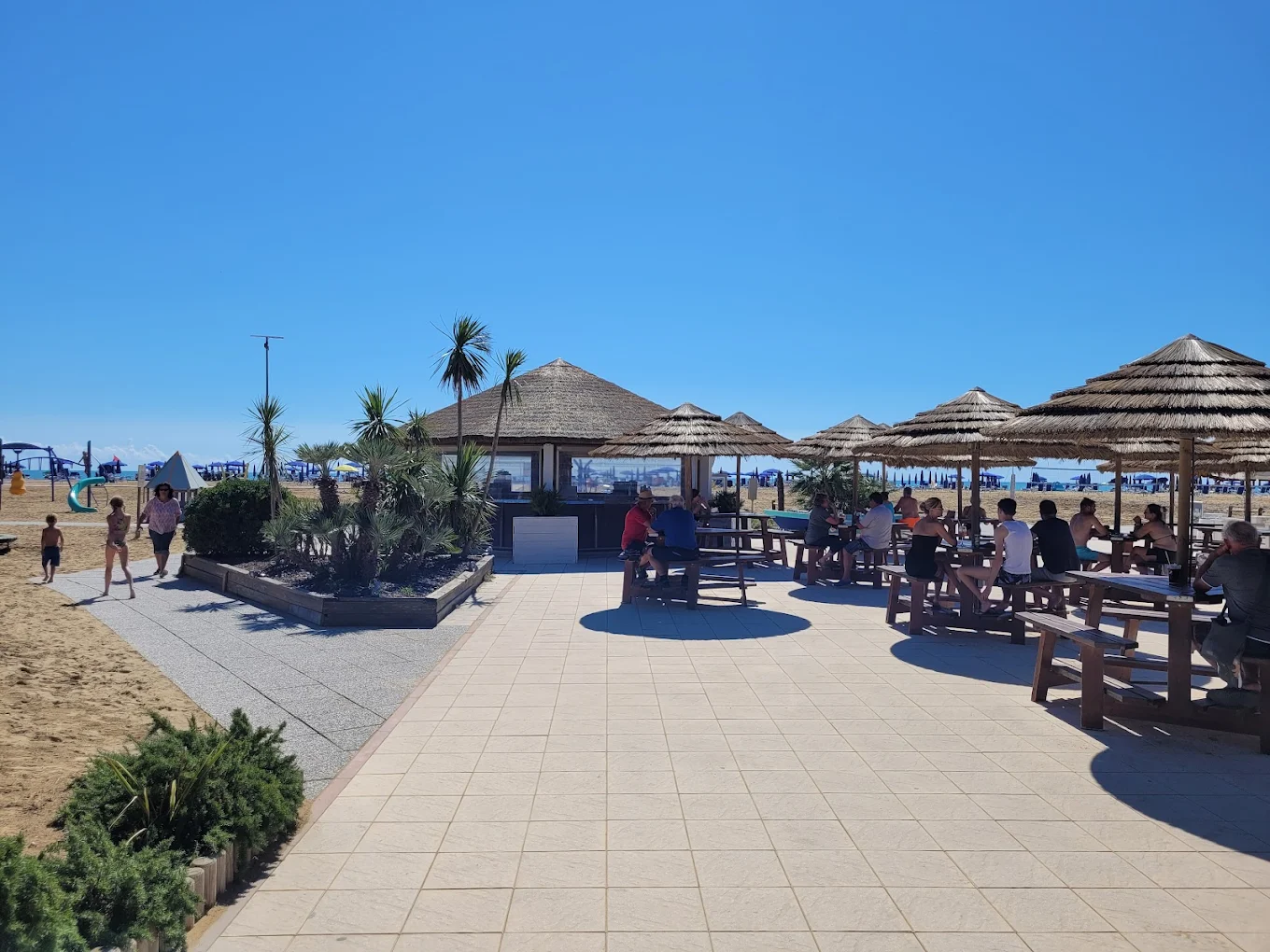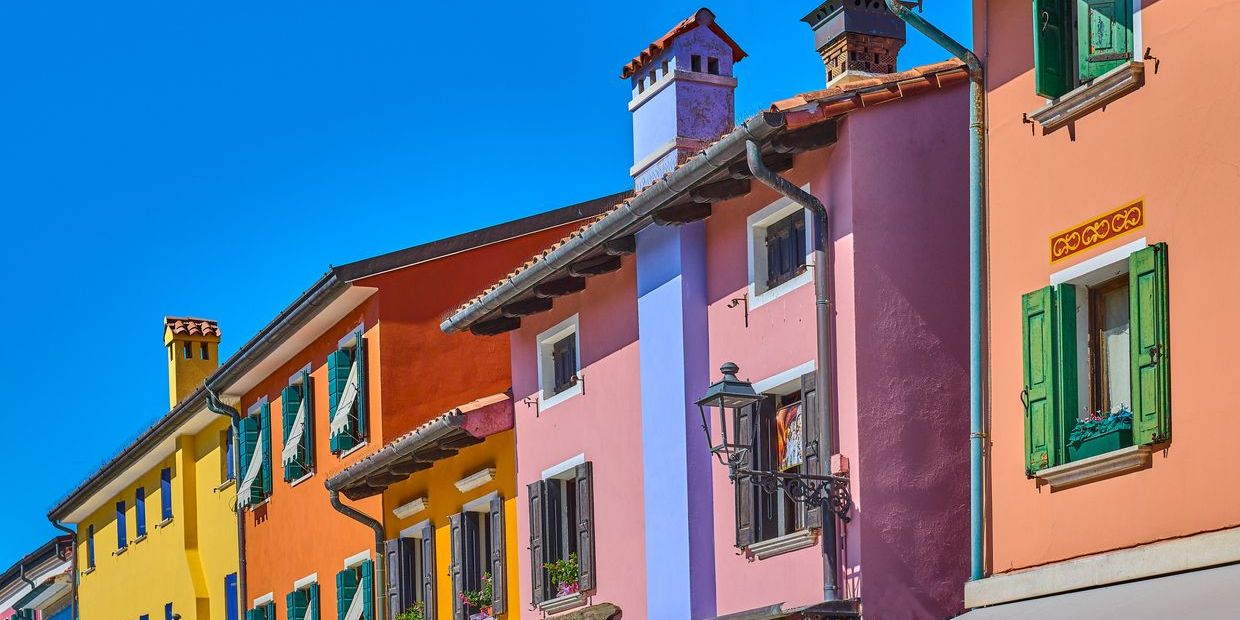Standing at the edge of the Adriatic, the Church of the Madonna dell’Angelo is one of Caorle’s most iconic landmarks.
Located on a small promontory where the sea hits the shore, this little sanctuary is a spiritual symbol for many locals, sailors and a must-see monument for all visitors.
In this article, we’ll explore the Caorle Church of Madonna dell’Angelo. Join us as we review its history, architecture, coastal location, and the traditions that keep it alive today.

What is the Madonna dell’Angelo in Caorle?
The Madonna dell’Angelo is a church, but throughout its history, it has transformed into a fishermen’s sanctuary. It is deeply tied to the town’s local traditions, religious devotion, and maritime legacy.
The origins of the church come from a local legend where a fisherman was said to have discovered a statue of the Virgin Mary floating on the sea, on top of a marble pedestal. The village’s adults were unable to move it, but a group of children carried it to shore effortlessly.
From that moment, the church became the home of the Madonna, with its name “dell’Angelo” (of the Angel).
This story has been passed down through generations, making the Caorle Madonna dell’Angelo a cherished location.
What is the history of the Church of Madonna dell’Angelo?
The Church of the Madonna dell’Angelo has roots dating back over a thousand years.
Archaeological studies suggest that the original structure may date to the 6th or 7th century, originally built of wood. By the 9th century, the church was formally dedicated to Saint Michael the Archangel.
Over the centuries, the sea has been a blessing and a curse. Coastal erosion and storms damaged the sanctuary, forcing reconstruction time and time again. In 1751, the church was rebuilt into the single-nave structure that is there today.
However, tragedy struck in 1923, when thieves set fire to the sanctuary’s original statue of the Madonna. The wooden piece was destroyed, but the community quickly commissioned a replacement. This statue remains in the church today.
The bell tower, or campanile, has its own story. Originally built as a standard church tower, it was adapted in the early 20th century to function as a lighthouse. It still is a functioning lighthouse today, sending a signal every six seconds, visible up to 14 nautical miles away.

What are the architectural features of the Church?
From the outside, the Caorle Church of Madonna dell’Angelo is simple. It has a pale façade, set against the backdrop of the Adriatic. The church is now a single nave, created during the 18th-century reconstruction, replacing the earlier three-nave basilica. Although it is smaller than the previous structure, it is now a more intimate location of devotion.
Must-see features inside the church
- The Statue of the Madonna and Child: The centrepiece of devotion, located on the main altar.
- Side Chapels: Including chapels dedicated to the Crucifix and to Pope Pius X.
- Decorative Elements: Angels painted on the vaults, and inscriptions such as “Tota Pulchra Es Maria” celebrating the Virgin Mary.
- The Bell Tower: An octagonal campanile with lighthouse function, combining sacred and practical maritime roles.
A unique location by the sea
Few churches in Italy have such a striking setting. The Madonna dell’Angelo is on the eastern end of Caorle’s old town, where the seafront promenade meets Levante Beach. Surrounded by the sea on three sides, it looks almost like it is floating on the water, especially during high tide.
Traditionally, fishermen pray here before setting out on dangerous voyages, and sailors used the campanile as a navigational landmark before it became an official lighthouse.
As a visitor, when you are exploring the church, don’t forget to walk along the promenade and discover the colourful houses, sea-defence rocks decorated with carvings, and the sanctuary.
Visiting the Madonna dell’Angelo
The Church of the Madonna dell’Angelo is open year-round, though opening hours change depending on the season.
In summer, the church is typically open from early morning until late evening (around 11 pm), making it a great stop on your walk along the promenade at sunset. On the other hand, in winter, the church generally closes at sunset due to shorter daytime hours.
Entry is free, although donations are welcome. Modest dress is recommended, as this remains an active place of worship, so please plan for this if you decide to visit after a trip to one of Caorle’s beaches!
When are the best times to visit?
Mornings are peaceful and have fewer crowds, while the sunset has a spectacular view, ideal for photography.
A special time to visit is during festive years. Every five years, the Madonna statue is taken out for a grand sea procession, carried on fishing boats decorated with flowers. This tradition draws thousands of pilgrims and tourists.

Why should you visit Caorle and the Madonna dell’Angelo?
The Caorle Madonna dell’Angelo is a special little church along the seaside. It has unique architecture and centuries-old traditions, making it a must-see monument in Caorle. We suggest combining your visit to the church with a stay in comfortable, well-located accommodation.
Agenzia Lampo offers a wide range of options, from seafront apartments to family-friendly residences, making it easy to enjoy both the sanctuary and the charms of Caorle.
Caorle Church of Madonna dell’Angelo Checklist
1. Walk along the promenade to approach the sanctuary from the old town.
2. Explore inside the church to admire the statue and votive offerings.
3. Light a candle for loved ones or for safe travels.
4. Take photos of the church with the Adriatic behind it.
5. Stay for sunset and watch the colours change over the water.
6. If visiting during the procession year, plan to watch the boats carry the Madonna through the sea.
The Madonna dell’Angelo: a coastal landmark to visit
The Madonna dell’Angelo is the heart of Caorle, showcasing the town’s maritime history, natural beauty and local devotion.
When planning your next trip to the Veneto coast, make sure to include the Caorle Church of Madonna dell’Angelo on your list of must-see places.





